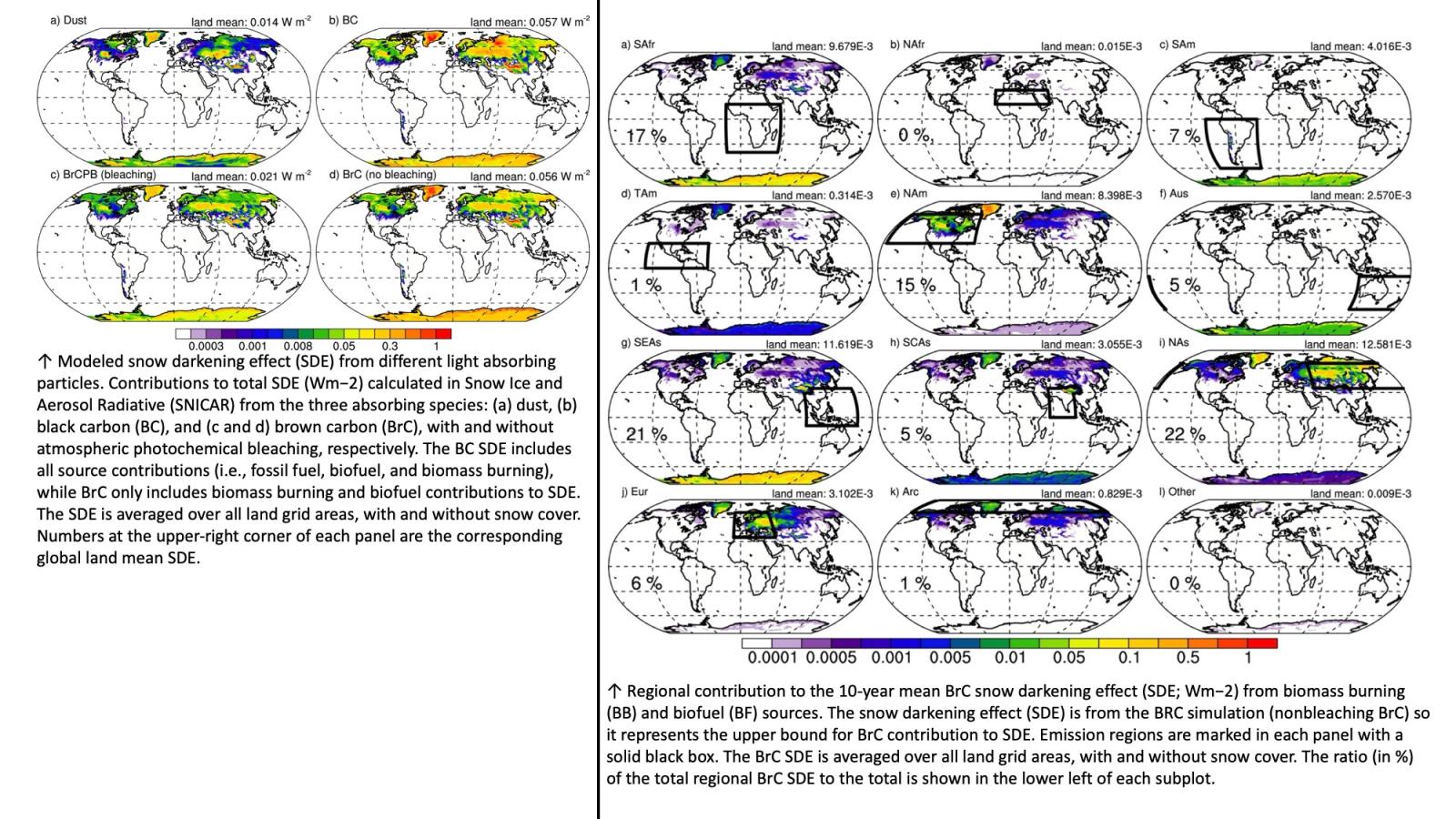Brown Carbon Fuel and Emission Source Attributions to Global Snow Darkening Effect
Snow and ice albedo reduction due to deposition of absorbing particles (snow darkening effect [SDE]) warms the Earth system and is largely attributed to black carbon (BC) and dust. Absorbing organic aerosol (BrC) also contributes to SDE but has received less attention due to uncertainty and challenges in model representation. This work incorporates the SDE of absorbing organic aerosol (BrC) from biomass burning and biofuel sources into the Snow Ice and Aerosol Radiative (SNICAR) model within a variant of the Community Earth System Model. Additionally, 12 different emission regions of BrC and BC from biomass burning and biofuel sources are tagged to quantify the relative contribution to global and regional SDE. BrC global SDE (0.021–0.056 Wm−2 over land area and 0.0061–0.016 Wm−2 over global area) is larger than other model estimates, corresponding to 37%–98% of the SDE from BC. When compared to observations, BrC simulations have a range in median bias (−2.5% to +21%), with better agreement in the simulations that include BrC photochemical bleaching. The largest relative contributions to global BrC SDE are traced to Northern Asia (23%–31%), Southeast Asia (16%–21%), and South Africa (13%–17%). When looking at BrC SDE from a receptor region perspective, most of the global SDE is driven by near source emissions. This is true of the SDE over the Arctic and surrounding regions, the Rocky Mountains, and the Tibetan Plateau. Conversely, Antarctica is influenced not only by southern hemisphere emission sources, but also from long-range transport of biomass burning emissions from Indonesia. Transport from Southeast Asia contributes nearly half of the regional BrC SDE in Antarctica (0.084–0.3 Wm−2), which is the largest regional input to global BrC SDE in our model.

